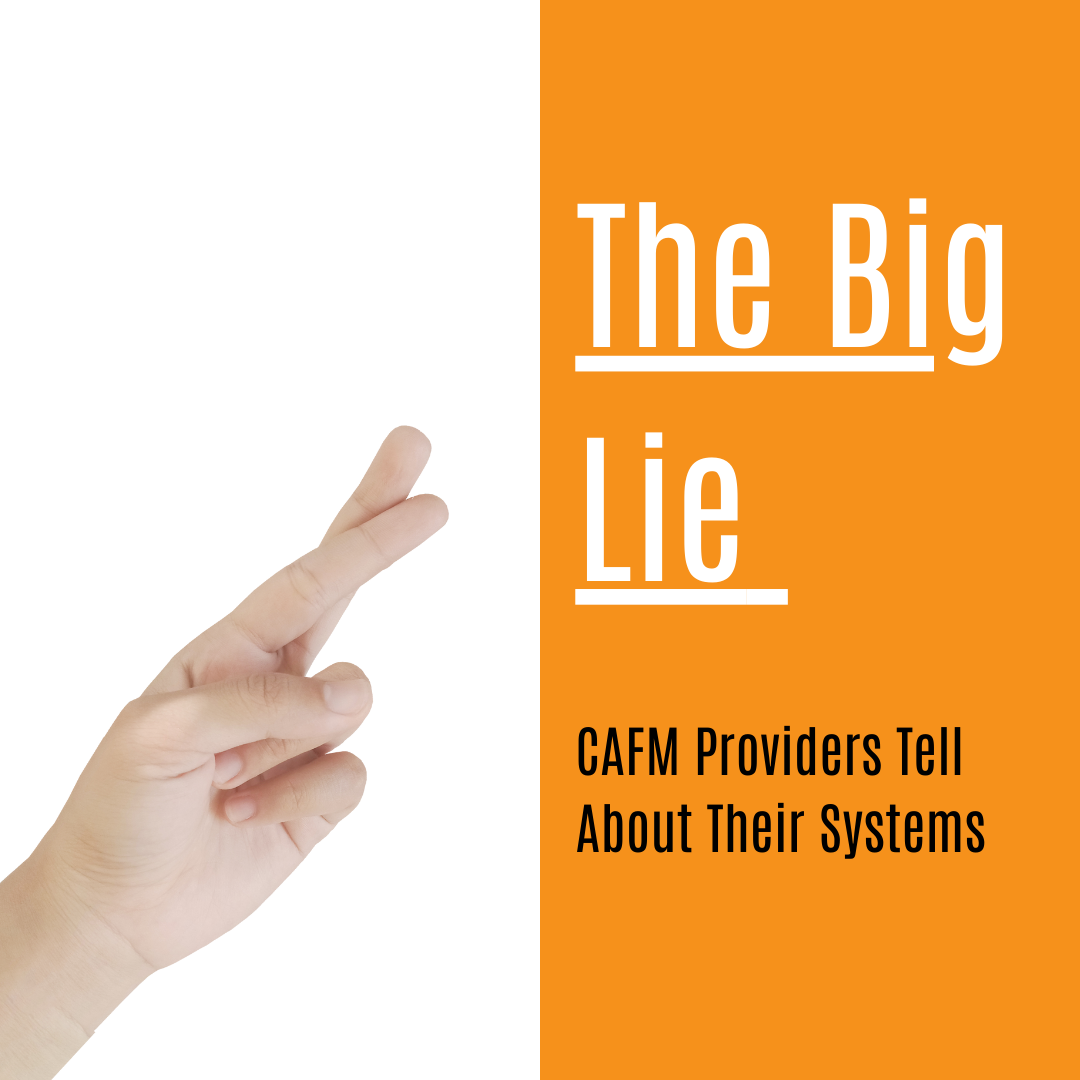
The Big Lie CAFM Providers Tell About Their Systems
In the dynamic world of facility management, technology has become a guiding light, illuminating the path to efficiency and productivity. Central to this technological landscape are Computer-Aided Facility Management (CAFM) systems or facility management software, touted as the ultimate solution to streamline processes, boost collaboration, and enhance overall facility performance.
While facility management software solutions undeniably offer a plethora of benefits, there’s a big lie that some these providers perpetuate – the notion of a one-size-fits-all solution.
The Myth of Universal Suitability
Facility management software providers often pitch their systems as all-encompassing solutions capable of meeting every conceivable facility management need. They assert that their platform will seamlessly fit into any organisation’s operations, irrespective of its size, industry, or unique challenges. This myth of universal suitability can be dangerously misleading, setting up facility managers and providers for potential disappointment and frustration.
The reality is that no two facilities are identical, and their intricacies vary widely. From the type of industry to the nature of assets, the workflow processes to compliance requirements, each facility possesses its distinct set of intricacies that can’t be adequately addressed by a one-size-fits-all approach. This is where the lie of universal suitability falls apart – the promise that a single CAFM system can cater to diverse complexities without the need for customisation.
Embracing the Power of Customisation
The truth is that the real strength of a facility management software lies in its adaptability. Rather than settling for a generic solution that claims to cover all bases, facility managers should seek out software providers that understand the importance of customisation. A software that can be tailored to align with the specific processes, challenges, and goals of a facility is far more likely to deliver meaningful results.
Customisation doesn’t mean reinventing the wheel with each implementation. Instead, it involves configuring the Facility management software to suit the unique requirements of the facility. This might include customising workflows, asset tracking, maintenance schedules, reporting formats, and communication protocols. A well-designed Facility management software should provide a range of configurable features that can be adapted to meet the specific needs of a facility, rather than forcing the facility to adapt to the limitations of the software.
The Real Value of Configurability
Configurability is the antidote to the big lie of universal suitability. It empowers facility managers to leverage the full potential of a facility management software while maintaining the integrity of their existing processes. When a facility management software can be easily tailored to align with the facility’s operations, it eliminates the frustrations of trying to fit a square peg into a round hole.
Imagine a scenario where a facility management software seamlessly integrates with your existing asset management practices, preventive maintenance schedules, and vendor management procedures. It’s a system that recognises the nuances of your facility and offers flexible modules that can be adjusted to enhance your workflows. This level of configurability not only saves time and resources but also ensures that the facility’s unique challenges are addressed effectively.
Overcoming the Lie: Key Considerations
To avoid falling for the big lie, facility managers need to approach the selection of a facility management software with a keen understanding of their facility’s intricacies. Here are key considerations to keep in mind:
- Identify Your Facility’s Unique Needs:
Before considering any software, assess your facility’s specific requirements. What are your pain points? What processes need improvement? Identifying these needs will guide you towards a facility management software that can be tailored to address them.
- Evaluate Configurability:
During your selection process, delve into the configurability options offered by different facility management software providers. Look for systems that allow you to customise workflows, data fields, reporting formats, and more.
- Request Demonstrations:
Don’t hesitate to request demonstrations from potential software providers. Ask for real-life examples of how their system has been customised to suit different facilities. This will give you a clear sense of their commitment to adaptability.
- Prioritise Flexibility:
Choose a CAFM provider that emphasises flexibility and collaboration. A provider who understands the importance of tailoring their solution to fit your facility’s needs is more likely to deliver a successful implementation.
- Embrace Long-Term Value:
While a generic system might seem convenient initially, its limitations could hinder your facility’s growth in the long run. Embrace the long-term value of a tailored solution that evolves with your facility’s changing needs.
In the pursuit of operational excellence, facility managers should be wary of the big lie that facility management software providers tell about universal suitability. Customisation and configurability are the cornerstones of an effective system that truly transforms facility management. By seeking out solutions that embrace these principles, facility managers can harness the true power of technology to navigate the unique challenges of their facilities and propel them towards a future of efficiency and success.
Author
Charlie Bown
Ex Facility Manager, I feel your pain!

